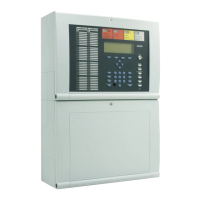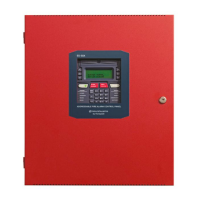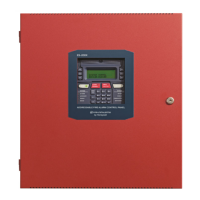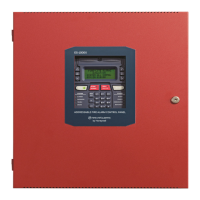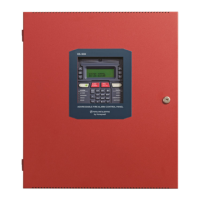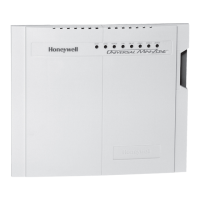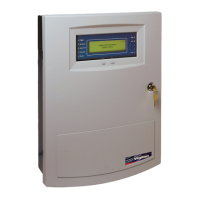Fire Alarm Control Panel IQ8Control C / M
FB 798951.10.GB0 / 04.15 37
6.1.6 Checking the batteries
Monitoring the batteries according to EN 54
In event of a failure of the rated voltage (230 V AC) and maximum load on the batteries, the supply of power must
be guaranteed to ensure proper operation of the fire alarm control panel as well as the connected components
and external devices.
While in a resting state, only a low current generally flows through an FACP. For this reason, an increased contact
resistance at the connection terminals of the batteries will not be detected even if the rated voltage fails. It is
therefore necessary to test the batteries.
In event of an alarm, if all external alarm devices are triggered, the battery voltage could collapse in event of a
rated voltage failure and the FACP could switch off completely. Complete alarm notification is then no longer
guaranteed.
The maximum resistance at which this function is still guaranteed depends on various factors related to the FACP
and the way it is used. This resistance value is therefore set at the factory to 200 mΩ. In accordance with the
requirements of EN 54, an increase in the resistance must be indicated within four hours.
The FACP IQ8Control has an integrated, standard-compliant test function for monitoring the batteries and their
connection lines within the required times and for indicating a fault. This check is performed only while the rated
voltage (230 V AC) is present and when the charge level of the batteries is high; it is performed automatically
roughly every 15 minutes (factory setting) by the fire alarm control panel in addition to testing the batteries for
deep discharging (final discharging voltage).
Fault display
If the resistance of the batteries and their connection lines is too high, if a battery voltage lies below the final
discharging voltage (battery not connected, deep-discharged or defective, or fuse defective) or if a fault exists in
the resistance measurement (no load present), the fault message >Battery Fault< is displayed on the FACP.
Extension of the battery connection lines is only possible with limitations.
Exceeding the maximum permissible measurement tolerance of 200 mΩ leads to a fault message.
The internal resistance of the batteries increases with age. This change is taken into account and
compensated for with the measurement tolerance.
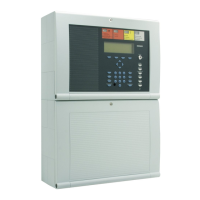
